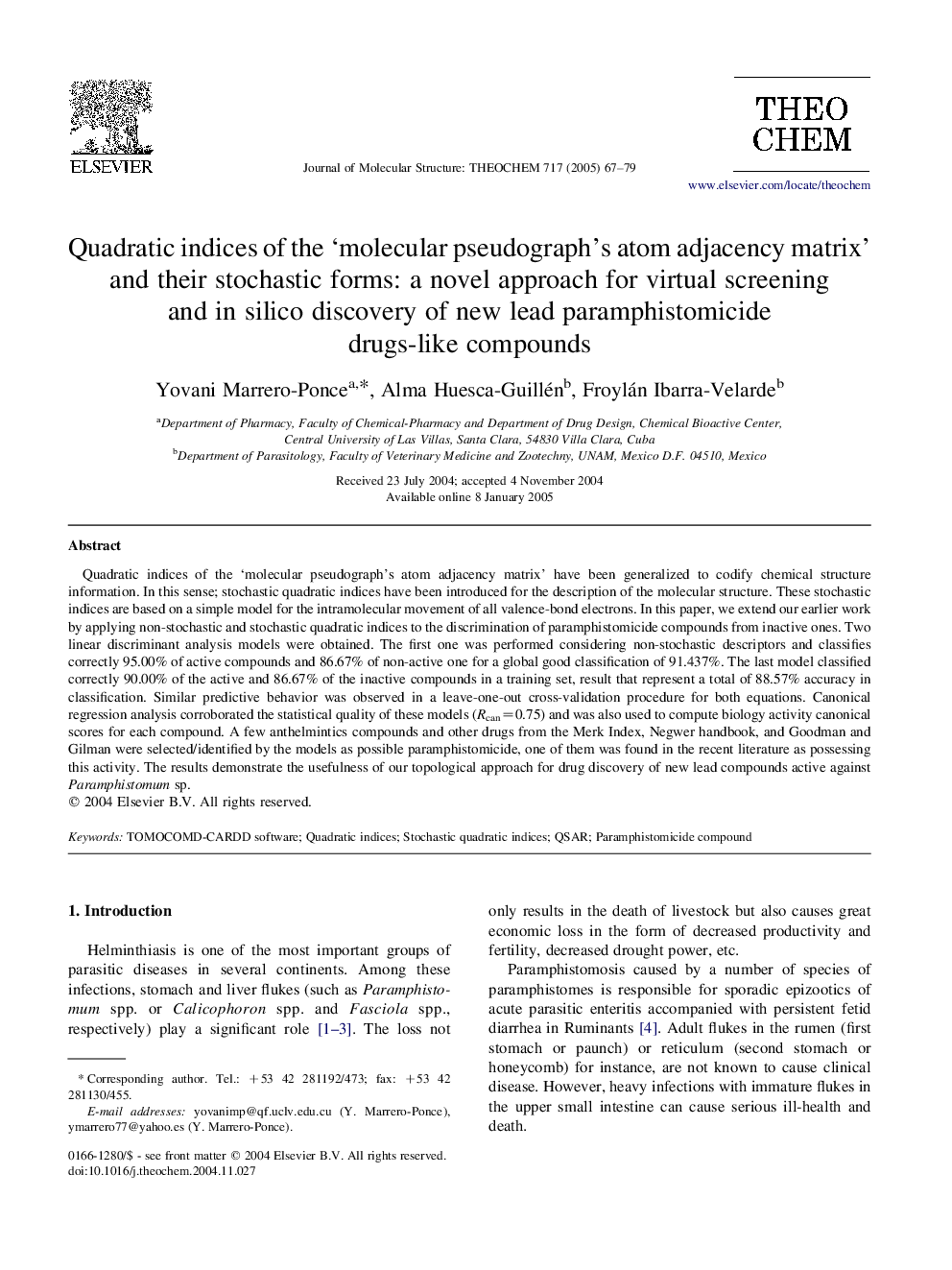| Article ID | Journal | Published Year | Pages | File Type |
|---|---|---|---|---|
| 9591665 | Journal of Molecular Structure: THEOCHEM | 2005 | 13 Pages |
Abstract
Quadratic indices of the 'molecular pseudograph's atom adjacency matrix' have been generalized to codify chemical structure information. In this sense; stochastic quadratic indices have been introduced for the description of the molecular structure. These stochastic indices are based on a simple model for the intramolecular movement of all valence-bond electrons. In this paper, we extend our earlier work by applying non-stochastic and stochastic quadratic indices to the discrimination of paramphistomicide compounds from inactive ones. Two linear discriminant analysis models were obtained. The first one was performed considering non-stochastic descriptors and classifies correctly 95.00% of active compounds and 86.67% of non-active one for a global good classification of 91.437%. The last model classified correctly 90.00% of the active and 86.67% of the inactive compounds in a training set, result that represent a total of 88.57% accuracy in classification. Similar predictive behavior was observed in a leave-one-out cross-validation procedure for both equations. Canonical regression analysis corroborated the statistical quality of these models (Rcan=0.75) and was also used to compute biology activity canonical scores for each compound. A few anthelmintics compounds and other drugs from the Merk Index, Negwer handbook, and Goodman and Gilman were selected/identified by the models as possible paramphistomicide, one of them was found in the recent literature as possessing this activity. The results demonstrate the usefulness of our topological approach for drug discovery of new lead compounds active against Paramphistomum sp.
Keywords
Related Topics
Physical Sciences and Engineering
Chemistry
Physical and Theoretical Chemistry
Authors
Yovani Marrero-Ponce, Alma Huesca-Guillén, Froylán Ibarra-Velarde,
